10 Essential Tips for Your Content Marketing Strategy
The Internet has grown into a powerful marketing tool, and when it comes to your business, your site can, and should, provide much more than the bare minimum.
Research shows that 59.5% of the global population are active internet users. That’s a ton of opportunity for your brand to tap into and achieve maximum growth for your business.
Powerful content will attract and retain customers. On the other hand, content marketing enables your business to sustain brand loyalty, increase brand awareness and credibility, and build an online community of engaged and responsive customers.
Ultimately, a functional content marketing strategy is a critical component for long-term, sustainable growth. To help you create a successful one, here is a round-up of ten versatile and priceless tips to help you achieve the desired results for your business.
1. Set Measurable Goals
Every content marketing strategy must have clear, concrete, and measurable goals. Simply ‘getting views’ shouldn’t be the business goal. So before you get started, determine what you hope to accomplish with the strategy and create pieces that tie back to that.
Crafting and publishing content is never enough for a marketing strategy. Instead, you must identify your target audience and decide how your content can best serve that group. Additionally, you’ll want to use analytics to ensure your content can reach the right people with aligning search intent. While it’s crucial to write quality content to grow your audience, you must also ensure it ties back to your business.
2. Know Your Audience
Content marketing requires writing articles, blog posts, and graphics that engage and attract the right audience. To do that, you need to understand what your potential customers want. What are their interests? What do they need help with? And what words and phrases do they use to find answers online?
There are many prospective customers for your product, so you can’t go out and interview every one of them. However, you can create a buyer persona and identify what they would need from your products. Alternatively, encourage your current customers to provide feedback, so you will know what they expect from your products. Having a solid understanding of your audience means your content marketing efforts will be more successful.
3. Create for Your Audience
It is not enough to know your audience, you also need to write for them. From topic selection to your final edits, your audience should be at the center of how you present information.
When you’re creating content, you have two primary goals: to educate and help solve a problem. Right from the start, you should select topics that solve for the reader by answering their questions, offering practical resources and tips, and getting them acquainted with what you sell and how you can help. Once a reader continues to come to you as an authoritative source of information, they’ll trust you enough to make you their provider.
4. Stay Relevant
The internet is full of content, with articles, videos, webpages, and media being uploaded every second on an unimaginable scale. 4.4 million new blog posts alone get on the internet across all platforms every day. For this reason, creating evergreen content that remains relevant over extended periods is critical.
Evergreen content drives more traffic and has lower maintenance costs, as you don’t have to keep updating or replacing it. It also sustains high SEO ranks and can be shared on social media for a long time. Once you master the art of writing timeless content, you can ensure your articles, e-books, and tutorials stay relevant for years to come.
5. Narrow Your Focus
As you select the topics you want to write about, you may find yourself coming up with broad, general topics. However, unless you’re ready to spend time creating comprehensive long-form content, you should narrow down each one so that you can cover it entirely.
In addition to making content creation more manageable, this will also help you create more effective topics. It’s better to have ten pages that comprehensively answer a specific question than one page that answers multiple questions, but with minimal explanation, more so if each question deals with a different topic.
6. Understand the Buyer's Journey
A buyer’s journey is the active research process a potential buyer goes through leading up to their purchase. It follows them through the stages of becoming aware of a need, considering different solutions to fulfill that need, and then deciding between them.
As a good content marketer, you should understand that your strategy needs to engage and delight readers at any stage of the journey. While your content should initially attract new visitors to your business, it should also convince hesitant prospects to purchase and encourage customer retention and long-term brand loyalty.
7. Re-purpose Content
It takes time and talent to craft convenient, engaging content. However, you can ensure peak efficiency by recycling existing content. Additionally, repurposing content allows you to reach new audiences. For instance, let’s say your podcast team published a high-performing episode. Why not turn that episode’s topic into a blog post to get the same content to your reader audience? Alternatively, if you created a blog post that performed well, you might consider making a YouTube video on the same topic to reach an audience that prefers video over text.
Repurposing your content will ensure your audience has more than one chance to see it.
8. Research Your Competition
You’re likely not the only business in your industry attempting to attract customers with content, considering that 82% of marketers actively use content marketing. Although this means that you have a lot of competition, it also means that you have the opportunity to see what other people are creating.
Everything you need to know about your top competitors is on their websites. Look at what they are doing with their content strategies and understand their formats, topics, and how their readers are responding. Moreover, this will give you ideas and help you create unique content to better your content marketing strategy.
9. Find a Unique Angle
While your competitors can be substantial sources of topic ideas, you should avoid publishing content that’s too similar to anyone else’s. After all, the goal of content marketing is to provide your customers with personalized information that is not readily available.
Whenever you see a great idea, fight the urge to replicate it by making minor alterations. Instead, see the topic as a starting point, and look for a unique angle to create content. This will keep you from becoming part of the “echo chamber” of content online and create more personalized content for your readers.
10. Monitor Your Progress
It’s easy to merely look at the volume of pages you’ve published and feel like you’ve accomplished something. However, it’s necessary to look at whether or not those pages are actually generating results. As mentioned earlier, you need to set clear goals for your strategy, so as you utilize these content marketing tips and publish content on your site, ensure you regularly monitor your progress against your goals.
Make checking Google Analytics, or another program, part of your routine. Analytics programs carefully monitor, track, watch, and report on the numbers. If things are going well, keep doing what you’re doing, and if not, use that data to revise your strategy to be more effective.
The Best Free SEO Tools
Creating online content is increasingly becoming a dominant trend in this era. Even the rate at which people are embracing online content is dazzling. This has increased significantly the need to stand out from the ever-growing crowd of content marketers. This is where SEO comes in.
It’s crucial to have an SEO strategy alongside your content strategy. Doing so will ensure your posts are as optimized as possible, and SEO tools help with that. Some SEO tools are paid, but that doesn’t mean that you have to spend money to rank. There are tons of free SEO tools that are just as powerful as their paid counterparts and can help you drive more traffic.
In this article, we have compiled a list of some of the best free SEO tools. They are categorized into Keyword Research, Link Building, Analytics, and Technical SEO tools that you can use to better your SEO strategy. Let’s get started!
Technical SEO Tools
Technical SEO is essentially the more involved optimization tweaks that help give your content the best chance to rank for relevant keywords and phrases. It allows you to focus on analyzing how well the search engines are crawling and accessing your website. These are some of the best free Technical SEO tools.
Pagespeed Insights
In SEO, speed is everything. The faster your site loads, the better you will rank on search engines, and the more your website’s experience will be enjoyable for visitors. Google’s PageSpeed Insights Tool allows you to analyze a specific page’s site speed and user experience. Additionally, it will show you how to fix any errors on the page to help your site load fast. It doesn’t matter if you are optimizing for tablet devices, desktop, or mobile, it will tell you what to fix.
Siteliner
Siteliner is a tool that allows you to find duplicate content within your website. You need to insert your domain, and it crawls up to 250 pages online. It analyzes the percentage of your website that is duplicate content.
It will then tell you which pages have duplicate content and how much percentage they have. You can then analyze each page and make the necessary changes to avoid too much duplicate content on your site.
SEO Analyzer
This tool tells you everything that’s wrong with your pages, from duplicate meta tags to sitemaps. It looks at every crucial factor when it comes to SEO and content creation. It will even tell you your overall site speed and what you need to fix to get the most out of your site. If you register for a free account on SEO Analyzer, this tool automatically checks for errors each week on your behalf.
Keyword Research Tools
Keyword research is a core part of optimizing your site. Keyword Research Tools make it easier to find the right keywords to target and give you the data that you need to rank for them. It is crucial to find and use the right keywords because when you do keyword research poorly, it can complicate your search and slow you down.
Ubbersuggest
Ubersuggest is a free SEO tool that helps users generate new keywords and content ideas. This tool will give you a high-level overview of the keyword you’re searching for. It’s a great tool to use when looking for new ways to fill your social media or content calendar. It shows you how many searches a keyword has had over the last 12 months, all of the keywords your competition ranks for, and suggests content ideas based on the keyword. It is unique in that it provides local keyword suggestions. This is great for sites that are trying to do local SEO.
Google Trends
As the name suggests, this tool helps you track the popularity of topics and trends in your industry over time. It gives you a clear picture of how specific trends change over time and how people’s searching patterns around them change. To use Google Trends, you start by typing in a keyword. Then you’ll see the interest in that topic over time, which regions are most interested, and other keywords that people are searching for related to that query.
Link Building
Search engines are constantly updating their ranking algorithm to deliver relevant results, but backlinking continues to impact rankings significantly. External backlinks from other relevant and trustworthy sites act as a vote of confidence and help you to build your authority. Here are some tools to help you build your Link network.
Ahrefs Backlink Checker
Ahrefs Backlink Checker is a free tool that shows you the top 100 backlinks to any website you search. To use this tool, enter a URL into their search bar, and you’ll see the site’s domain rating, the number of backlinks, and the number of referring domains.
This free tool is great for some light backlink checking, as well as analyzing your competitors. Even though you’re limited to viewing 100 links, it’s still a great place to start. It shows you the total number of backlinks, links from referring domains, the site’s Domain and URL rating.
Mozbar
In SEO, the higher the authority of a site linking to you, the better off you are. MozBar shows you the domain authority and page authority of every page on the web. If you are going to build links effectively and rank higher, focus on the sites with the highest authority.
SEMRush
Similar to the above tools, SEMRush has a free version of its robust tool. SEMRush is not just for link building. It can provide help with keyword research, on-page SEO audits, content optimizations, rank tracking and much more. You just need to create a free account to access these features.
Analytics
If you’re already consistently pumping out engaging content and have a solid distribution strategy in motion, the next step is to do a follow-up. You need to know how that content is performing, who’s visiting your website, and how you can engage your audience so they’ll return. Here are some tools for the job.
Google Analytics
Google Analytics is the go-to platform for many marketers. It is free, chock-full of features, and comes with the clout of the Google brand name. After you enter the Google Analytics code into your website’s HTML, it measures your goals for you, including which pages a visitor clicks on, how long they stay, and the actions they take. For example, the tool can tell you whether a visitor is sharing the content on social media or clicking on an ad.
Search Console
It’s hard to imagine doing modern SEO without access to the data inside Google’s Search Console. The platform helps you make sure your website or Android app is Google-friendly and shows up in relevant search results. This is the most reliable location for information on how Google crawls and ranks your site and is one of the only places where you can get reliable keyword data.
Branding Tips For Online Businesses
A strong and easily recognizable brand is a valuable asset to every entrepreneur. With all the digital noise online, branding can make or break your business. It helps your customers recognize you and your products quickly in an online world full of similar products.
Online branding is especially crucial for service providers who don’t have a tangible product that clients can look at. Instead, customers buy the information you present about the service and the reputation that you’ve built up to support it. Apart from the product, a great brand experience gives consumers another reason to choose you over the competitors. 73% of people preferbrands that personalize the shopping experience. If your brand creates memorable experiences online and adds the value of personally connecting with the customers, they may be willing to pay more. This ultimately translates into more profit for you.
So how does one develop a great online brand experience from an online business? Here are some tips to help you get started and quickly bring you up to date with best branding practices for your online business.
Find Your Voice
The impression that your brand creates is crucial, but you can’t ignore how you convey it. Your company’s “voice” is the language and personality you and your employees use to relay brand messages and reach customers. Brand voice has become more key than ever if you need to stand out from the crowd of digital chatter.
Communicating the values of your brand to all the workers is the first step to consistently presenting a brand to the public. Only 48% of employees believe their leadership team, corporate communications, and marketing departments all speak about their brand with a unique voice.
As you create an online brand, you need to ask yourself: If your brand was a person, what personality traits would they take on, and what would they actively avoid? What phrases and stylistic choices does your brand use consistently? The answers to these questions combine to create your brand voice. You can apply this personality everywhere your brand speaks, including newsletters, social media posts, and internal communications like company announcements and advertising.
Use Social Media Consistently
We all use social media in our day-to-day lives, so there’s comfort with the tools to get started using social media for your online business.
Before social media arrived on the scene, branding essentially took place via word of mouth referrals or through traditional means of advertising. However, social media is one of the most efficient online branding tools you can use these days, and rightfully so. It doesn’t cost anything to create a Facebook Page for your business, start posting on Instagram, or create a presence on Twitter.
You can use social tools for free but the time and effort involved still represent an investment in your business. Take the time to create a social media plan upfront. This ensures all your social efforts support specific business goals, and you don’t lose focus. For example, on Instagram, 7 out of 10 hashtags are branded. And this is a great tool to use to increase your brand recognition. Be attentive and consistent on social media to avoid missing these helpful details.
Start Blogging
Using a blog for branding is hands down one of the best things you can do for your online business. Brands with blogs generate 67% more leads than those without a blog. Blogging clears the difference between branding and marketing practises to grow your business.
Blogs are easy to start, inexpensive, and only require a bit of your time. With your blog, you can easily leverage the power of social media to build brand recognition in your industry and establish an online presence.
Your blog content should be relevant and aimed at improving your business’ income. The effort to keep content and business-critical data fresh is worth it. 61% of people are more likely to buy from a brand that delivers unique content. That is where SEO comes in to help create content that attracts and converts traffic. The content needs to work together to establish a clear, seamless identity without unnecessarily duplicating the same information.
Also, stay updated on what your target audience is looking for, and adjust your approach. At clickslice, we offer SEO training that will go a long way to help you start blogging. If you can read, listen, and watch the latest news in your space, you will be able to connect to your niche and keep your blog content relevant.
Add Credibility With Testimonials
Testimonials are one of the most powerful marketing messages and brand boosters that you can have in your arsenal. Make sure to capitalise on the exceptional customer relationships you already have by gathering and sharing client testimonials and reviews on your website.
If you have received “rock star” testimonials from your customers, you can even tweet them out to your followers and publish them on your Facebook page. Testimonials are much more than an ego boost. They have tremendous power to persuade other people to seek out your business for products and services. Getting real clients to share their experiences boosts your credibility because it shows that your service has been tried and tested by the public.
Consumers naturally trust each other more than they trust just marketing collateral, so testimonials add more weight to the decision they’re trying to make. Encourage consumers who enjoy your product or service to leave a positive review or testimonial. Those initial happy consumers encourage more purchases, which creates more satisfied customers.
Pick Your Colours and Fonts
Once your business is up and running, you’ve got a name down, a consistent tone, and memorable experiences, you’ll need to think about how you’ll visually represent your brand. This is where your colours and typography come in handy.
Colours and Fonts don’t just define the look of your brand. They also convey the feeling you want to communicate and help you make it consistent across your entire brand. Customers are 80% more likely to identify you if you use the same colour patterns consistently on your branding material. You’ll want to choose colours and fonts that differentiate you from direct competitors to avoid confusing consumers.








